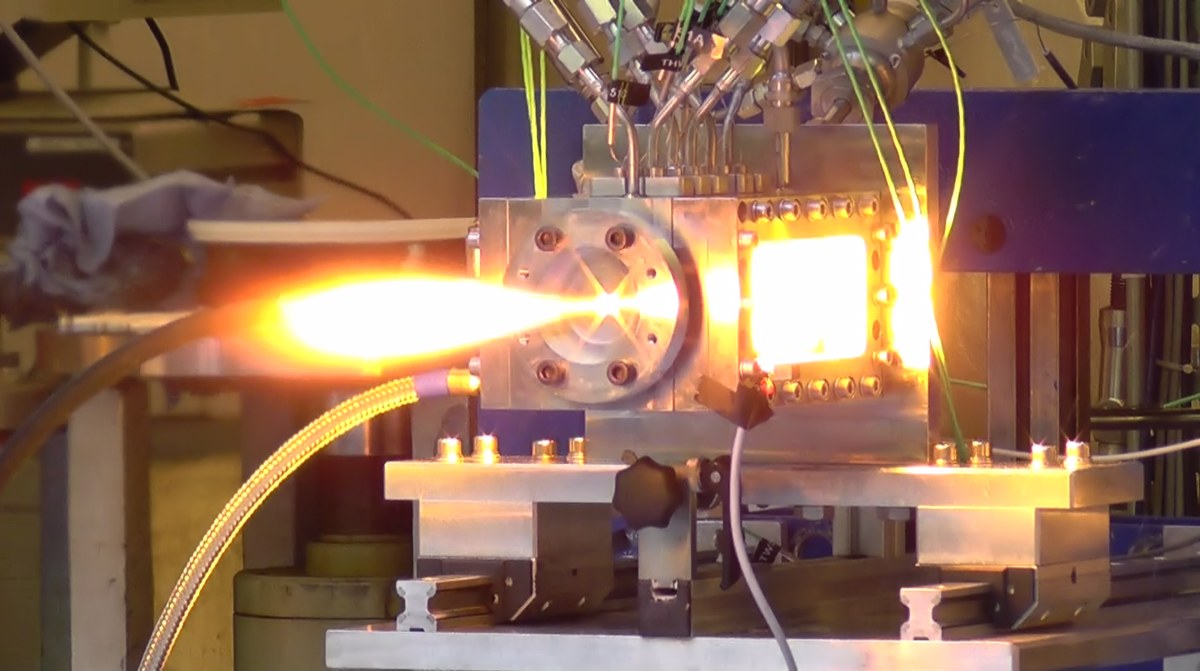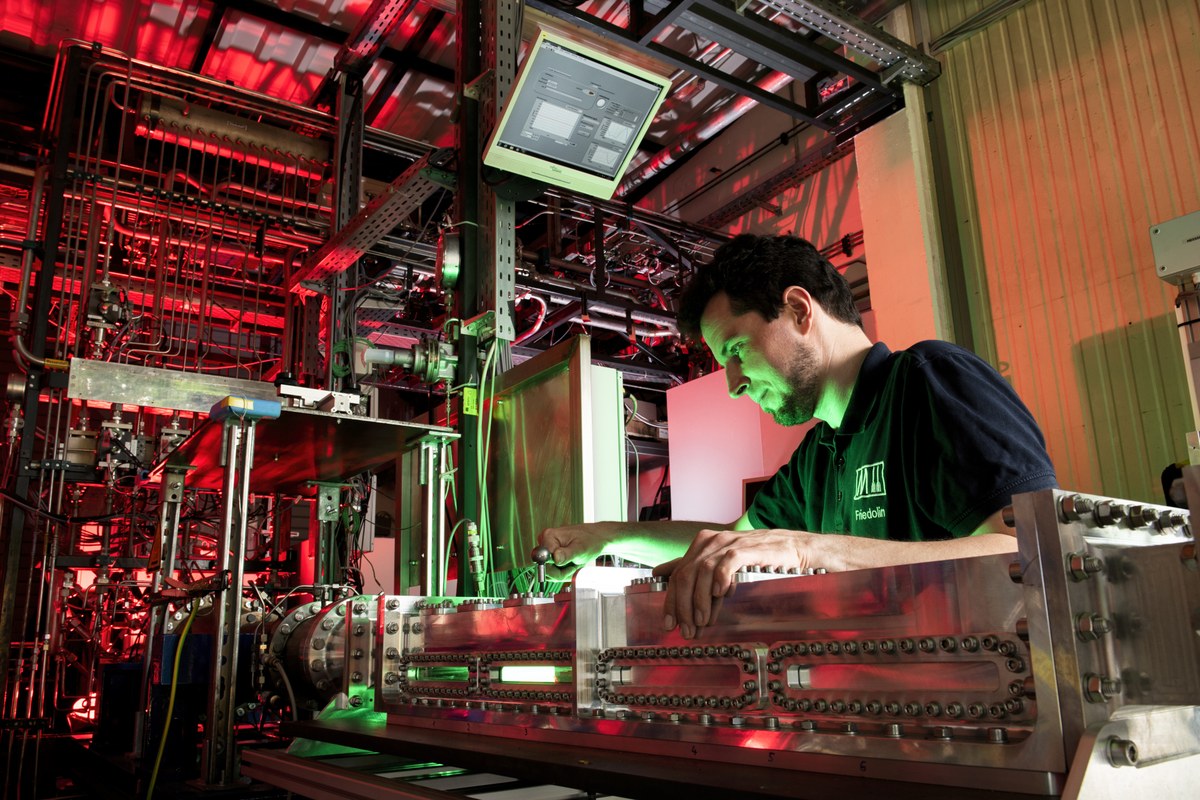Satellite and Orbital Propulsion
The Satellite and Orbital Propulsion Department of the DLR Institute of Space Propulsion is investigating the potential use of new, advanced propellants and propulsion types for aerospace applications and the expansion of the application profile of known propellants. Novel propellants such as ionic liquids, environmentally friendly and hypergolic ignition mixtures, gel-based and hybrid propellant systems, as well as improved hydrocarbon-based propellants and the propulsion systems adapted to them open up promising new areas of application and can make space flight easier, cheaper and safer. To investigate the various propellants and propellant combinations, the department operates the M11 research test stand, where engine tests are carried out at various test positions.
The areas of work include in particular:
- Research and development work on advanced "green propellants" for satellite and orbital propulsion systems: The focus is on the search for and research into storable propellants as an alternative to the hydrazines used in space flight to date, which are toxic, carcinogenic and difficult to handle. To this end, energetic ionic liquids (EIL), N2O-based mixtures (HyNOx, NOFBx) and hydrogen peroxide H2O2/high test peroxides (HTP) are being investigated. Mixtures of EILs and HTP can react automatically on contact, if necessary supported by the addition of a catalyst, which makes an ignition system superfluous.
- the work on gel propellants: Gels are non-Newtonian fluids and open up the possibility of combining the advantages of liquid and solid propellants. Engines with gel propellants should be able to be controlled like liquid rocket engines as well as being easy to handle and store like solid rocket engines. Research focuses on novel propellant mixtures, combustion properties, flow behavior (rheology) and spraying,
- as well as development work on hybrid rocket propulsion systems: If the oxidizer is in liquid or gaseous form and the fuel is in solid form, the propulsion system is referred to as a hybrid propulsion system. Hybrid propulsion systems are controllable and have safety advantages due to the spatial separation of fuel and oxidizer. Research topics include fuels with high regression rates, for example based on kerosene, additives – additives that increase combustion – and the influence of various oxidizers such as gaseous and liquid oxygen, nitrous oxide and hydrogen peroxide.
- research work on air-breathing high-speed propulsions such as ramjet propulsions (Ramjets and SCRamjets): Ramjets are interesting for civilian and defense applications because they can be used to cover greater distances with greater efficiency than conventional rocket propulsion systems. In the near-atmospheric range, ramjet engines can be used to reach high speeds and altitudes, which can facilitate access to space.
The Satellite and Orbital Propulsion Systems department has strong national and international links with numerous research institutions, universities and industrial companies as well as the European Space Agency (ESA). For example, EU FP-7 and H2020 projects have been worked on and in some cases led. There are also collaborations with industrial companies such as ArianeGroup, Bradford ECAPS, Bayern-Chemie, DawnAerospace and HyImpulse Technologies, research institutions such as the Swedish Defense Research Agency (FOI), Forschungs- und Technologietransfer GmbH (FOTEC), Fraunhofer-Gesellschaft, Von Karman Institute for Fluid Mechanics (VKI) and Warsaw Institute of Aviation, as well as universities such as the University of Stuttgart, TU Delft and Politechnico di Milano (PoLiMi). New, advanced propellants are being analysed, characterized and tested in various ESA commissions.








